Do you have a question about the Samsung UN55B6000 and is the answer not in the manual?
Details regarding intellectual property rights and licensing for USA users.
Details regarding intellectual property rights and licensing for users outside USA.
Details of Samsung's warranty service for products purchased in Canada or USA.
Guidance on preventing screen damage from displaying static images.
Highlights key functionalities and capabilities of the TV.
Lists the items included with the TV for setup and use.
Identifies and describes the buttons on the TV's front panel.
Step-by-step guide on how to use the on-screen display (OSD) menus.
Details the functions of each button on the TV remote control.
Instructions for inserting batteries into the remote control.
Guide to the initial TV setup process for channels and settings.
Instructions for connecting terrestrial broadcast antennas to the TV.
Steps for connecting cable television services to the TV.
Diagram and explanation of the TV's input/output ports.
Details on various connection ports including Component, AV, PC/DVI Audio.
Details on EX-LINK, USB, Audio Out, and Digital Audio Out ports.
Configuring channel settings like antenna type, auto-program, and fine-tuning.
Adding, deleting, and managing favorite channels and program guides.
Managing favorites, timer viewing, channel name editing, and auto program.
Configuring picture settings like mode, brightness, contrast, and color.
Detailed explanations of Dynamic Contrast, Gamma, Color Space, and White Balance.
Adjusting color tone and screen size for different inputs.
Details on Digital NR, Film Mode, Auto Motion Plus, and Picture Reset.
Instructions for viewing two video sources simultaneously on the TV.
Connecting and configuring a PC to display on the TV screen.
Adjusting PC display settings including auto adjustment, screen position, and image reset.
Configuring sound modes, equalizer, SRS TruSurround HD, and multi-track sound.
Adjusting Auto Volume, Speaker Select, Sound Select, and Sound Reset.
Configuring language, time, game mode, BD Wise, network, and V-Chip.
Using V-Chip to block programs by TV ratings, MPAA, and Canadian ratings.
Managing Downloadable U.S. Ratings, V-Chip emergency escape, and caption settings.
Managing time, clock modes, melody, light effect, energy saving, and PIP.
Configuring time zone, DST, sleep timer, and on/off timers.
Connecting the TV to the internet via wired or wireless network.
Setting up DHCP or static IP addresses for wired network connections.
Connecting the TV wirelessly using a wireless IP sharer and LAN adapter.
Configuring network type (Cable/Wireless) and internet protocol setup.
Connecting to Access Points (AP), including security key and WPS setup.
Connecting in Ad-hoc mode and configuring Auto/Manual setup for wireless networks.
Managing input sources, self-diagnosis, and software upgrades.
Performing sound tests, checking signal strength, and upgrading software.
Connecting and playing media files (photos, music, movies) from a USB device.
Navigating the screen display, sorting files, and using option menus.
Sorting photos by Basic View, Timeline, Color, Folder, or Preference.
Managing photo files: slideshows, group info, deselection, information, and safe removal.
Instructions for viewing individual photos and creating/playing slideshows.
Customizing slideshows with speed, effects, rotation, and background music.
Using zoom, background music, and picture/sound settings for slideshows.
Sorting music files by Basic View, Title, Artist, Mood, Genre, Folder, or Preference.
Options for repeat mode, picture/sound settings, information, and safe removal for music.
Instructions for playing individual music files and music groups.
Sorting movie files by Basic View, Timeline, Title, Folder, or Preference.
Options for managing movie playback, including group playback, deselection, and information.
Instructions for playing individual movie files and resuming playback.
Using movie playback controls and customizing movie options.
Options for repeat mode, picture/sound settings, picture size, and caption settings for movies.
Configuring settings for Media Play, including color view, screen saver, and DivX registration.
Connecting and controlling Samsung Anynet+ devices via HDMI-CEC.
Setting up Anynet+ (HDMI-CEC), auto turn-off, and switching between connected devices.
Using the TV remote in Anynet+ mode and performing recording or receiver setup.
Solutions for common Anynet+ issues like devices not working, connecting, or playing.
Using InfoLink to view news, stock market, and weather information.
Using News, Stocks, and Favorite Stocks services through InfoLink.
Configuring InfoLink auto-launch, display time, font size, background color, and position.
Provides solutions for common TV problems like poor picture, sound, or connectivity issues.
Solutions for PC display problems like vibration, centering, distortion, and reset messages.
Step-by-step instructions for attaching the TV stand.
Procedure for removing the TV stand.
Instructions for organizing cables for stand and wall-mount installations.
Details on VESA compatibility, screw specifications, and mounting guidelines.
Using Holder-Ring and installing the Kensington Lock for security.
Instructions for attaching the TV-Holder to the TV and wall/cabinet for stability.
Technical details for UN32B6000 model, including dimensions, weight, and environmental considerations.
Technical details for UN40B6000 model, including dimensions, weight, and environmental considerations.
Technical details for UN46B6000 model, including dimensions, weight, and environmental considerations.
Technical details for UN55B6000 model, including dimensions, weight, and environmental considerations.
Diagrams showing the physical dimensions of the UN32B6000 model.
Diagrams showing the physical dimensions of the UN40B6000 model.
Diagrams showing the physical dimensions of the UN46B6000 model.
Diagrams showing the physical dimensions of the UN55B6000 model.
Information regarding software licenses used in the product, including GPL and LGPL.
Detailed terms and conditions of the GNU General Public License.
Further terms, termination conditions, warranty disclaimers, and liability limitations.
Guidelines for applying GPL terms when developing new programs.
Details of the GNU Lesser General Public License and its terms.
Definitions and permissions related to the LGPL license.
Conditions for conveying covered works in object code form under LGPL.
Additional permissions, termination conditions, and patent clauses in LGPL.
Patent license grants and restrictions under the LGPL.
Guidelines for applying LGPL and linking proprietary applications.
Information on OpenSSL dual licensing and contact details for issues.
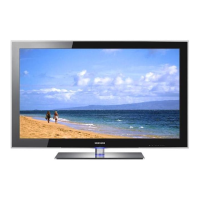

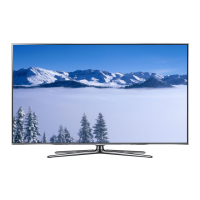
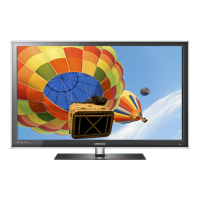


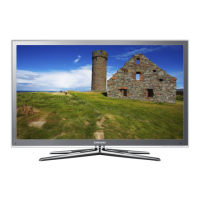


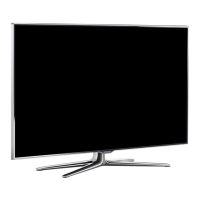
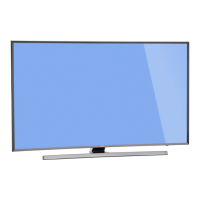

